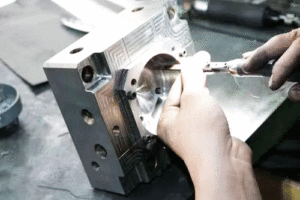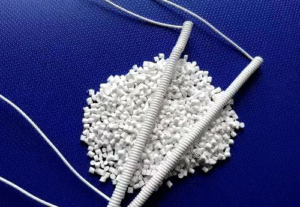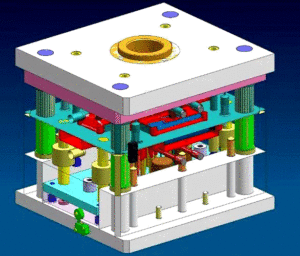
Polishing Treatment for Plastic Molds
Polishing Treatment for Plastic Molds With the widespread application of plastic products, such as daily-use items and beverage packaging containers, there is often a requirement
The application of modified plastics in home appliances, electronic appliances, automobiles and other fields often requires flame retardant. And flame retardant modification can be achieved by adding flame retardants. There are brominated flame retardant and halogen-free flame retardant.
Flame retardants are functional additives that impart flame retardancy to flammable polymers. Most of them are compounds of the VA (phosphorus), VIIA (bromine, chlorine) and IIIA (antimony, aluminum) elements in the periodic table.
The amount of heat released by any combustion in a relatively short period of time is limited. If a portion of the heat released by the fire source can be absorbed in a relatively short period of time, the flame temperature will be lowered. The heat radiating to the combustion surface and acting on the vaporized pyrolysis of combustible molecules into free radicals will be reduced. While the combustion reaction will be suppressed to a certain extent. Under high temperature conditions, the flame retardant undergoes a strong endothermic reaction. It absorbs part of the heat released by combustion and reduces the surface temperature of combustibles. What’s more, it can effectively inhibit the generation of combustible gases and preventing the spread of combustion.
After adding a flame retardant to combustible materials, the flame retardant can form a glass-like or stable foam covering layer at high temperature. It can isolate oxygen and have the functions of heat insulation, oxygen insulation. Besides, it can prevent combustible gas from escaping outward, thereby achieving flame retardancy. For example, organic phosphorus-inhibiting flame retardants can produce cross-linked solid substances or carbonized layers with a more stable structure when heated. The formation of the carbonized layer can prevent the polymer from further pyrolysis. On the other hand, it can prevent the thermal decomposition products inside from entering the gas phase to participate in the combustion process.
According to the chain reaction theory of combustion, free radicals are needed to maintain combustion. Flame retardants can act on the gas phase combustion zone. And then, capture free radicals in the combustion reaction, thereby preventing the spread of flames. Also, reduce the flame density in the combustion zone. And it ultimately reduce the combustion reaction speed until it stops.
The flame retardant decomposes incombustible gas when heated. Also, it dilutes the concentration of combustible gas from combustibles to below the lower combustion limit. At the same time, it also dilutes the oxygen concentration in the combustion zone. Besides, it prevents the combustion from continuing and achieves the effect of flame retardancy.

Flammability UL94 rating is the most widely used standard for plastic material flammability performance. It is used to evaluate the ability of a material to extinguish after being ignited. According to the burning speed, burning time, anti-drip ability, and whether the drops are burning, there are many evaluating ways.
Plastic flame retardant grade: from HB, V-2, V-1, V-0, 5VB to 5VA increasing step by step. HB: The lowest flame retardant grade in the UL94 standard.
Along with flame retardants, there is also flame retardant compounding technology. This technology refers to the compounding between phosphorous, halogen, nitrogen and inorganic flame retardants, or within a certain type of flame retardant. In the actual application of flame retardants, a single flame retardant often has certain defects. And it is difficult to meet people’s increasing requirements. Therefore, through the compounding technology, the advantages of two or more flame retardants can be combined. Also, complement each other to maximize the synergistic effect of the flame retardant. So it can reduce the dosage and enhance the effect of flame retardant.

Polishing Treatment for Plastic Molds With the widespread application of plastic products, such as daily-use items and beverage packaging containers, there is often a requirement

Injection Molding Techniques for TPE and TPR Injection Molding Techniques for TPE and TPR 1. Dry the TPE and TPR material before injection molding It

Winter Maintenance Measures for Injection Molding Machines As winter approaches and temperatures gradually drop, a cold chill envelops the earth. While ensuring personal warmth, it

Assessment Regulations for Mold Trial Exceeding 3 Times Assessment Regulations for Mold Trial 1. Purpose The purpose of this regulation is to standardize the work of